With the increasing depletion of fossil fuels, the demand for sustainable development, environmental protection, and energy-saving new energy sources is becoming increasingly strong. Solar energy, as one of the most promising renewable energy sources, has the characteristics of safety, reliability, no noise, no pollution, less constraints, low failure rate, and easy maintenance. Currently, research on solar power generation has reached a mature stage. In recent years, the emerging piezoelectric power generation technology has attracted increasing attention from researchers from various countries due to its advantages such as simple structure, no heat generation, no electromagnetic interference, and easy miniaturization compared to other micro power generation devices. There are various types of outdoor power generation products made using the principles of solar photovoltaic power generation or piezoelectric power generation, but current products only use one of the two as an energy source, resulting in the charging process being easily affected by external factors and unable to continue. In response to the current problem of singularity in sustainable energy utilization, the author proposes a portable power supply device based on photovoltaic and piezoelectric power generation technologies. By comprehensively utilizing the two sustainable energy sources to provide energy sources for portable power supply devices, the problem of portable power supply devices being easily affected by environmental factors is solved to a certain extent. The experimental data analysis results show that this power supply device can not only meet the requirements of portability, but also efficiently collect and store energy under different conditions.
1. System model
The input energy of the system is mainly divided into two parts: solar energy and kinetic energy generated by the human body. The energy storage battery, as the core part of the system, can store the energy input into the system and also use the electrical energy output from the system to supply power to electrical equipment.
According to the principle of photovoltaic effect, solar cells are used to directly convert solar energy into electrical energy. When there is no applied voltage in solar cells, the carrier migration caused by light will generate photo generated electromotive force at both ends of the P-N junction, which is the photovoltaic effect. If the P-N junction is connected to the external circuit, a current will pass through the circuit under illumination, and the P-N junction acts as a current source.
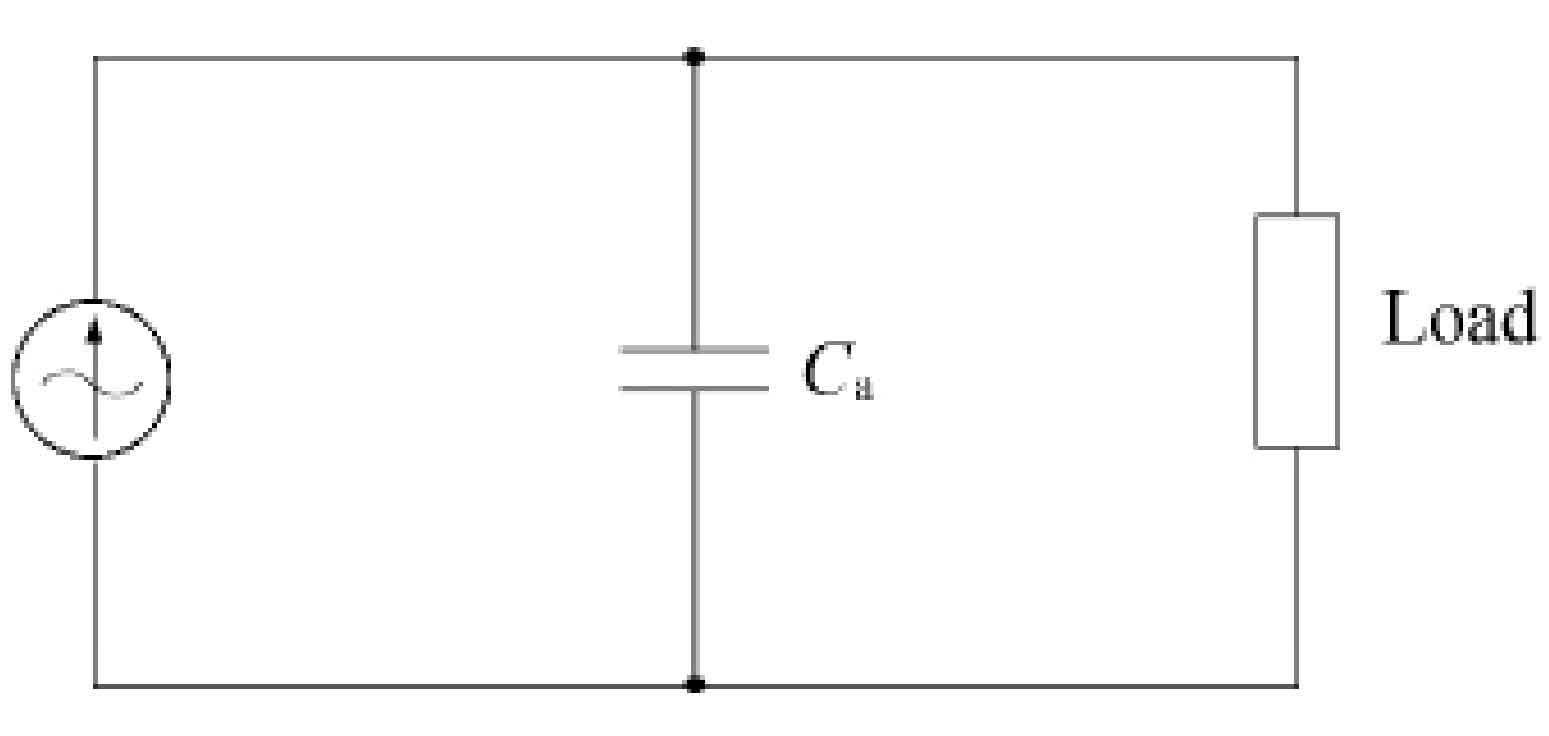
According to the positive piezoelectric effect, piezoelectric materials are used to directly convert the kinetic energy of the human body into electrical energy. The equivalent model of piezoelectric materials is shown in Figure 1. In the equivalent circuit, Ca is the parasitic capacitance equivalent to the piezoelectric material, which can be expressed as:
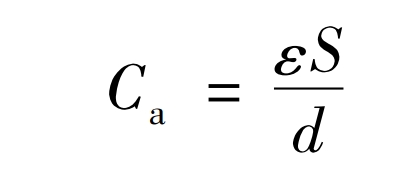
Among them ε The dielectric constant of a piezoelectric crystal, where S is the electrode area and d is the crystal thickness.
To store the two types of collected energy, corresponding transformations are carried out based on the characteristics of the output energy of solar cells and piezoelectric materials, and finally integrated together to charge the energy storage battery: the solar cell outputs direct current, and the output voltage is directly boosted through a boost circuit; Piezoelectric materials output AC power, which needs to be rectified through a rectifier circuit before being boosted through a boost circuit. The last two branches are connected in parallel to charge the energy storage battery. However, due to the different voltages collected and converted through these two methods under different conditions, it can lead to adverse consequences of backflow. Therefore, diodes with relatively low conduction voltage drop are added to each branch to achieve the goal of simultaneously utilizing both types of energy.
2. Structural Design of Portable Power Supply Devices
2.1 Design of solar power generation equipment
Considering the portability of solar power generation devices, the selection of solar panels should be as lightweight as possible and have a certain adaptability to harsh outdoor environments. Therefore, flexible solar panels are selected as the material for collecting solar energy in this portable power supply device. Flexible solar panels have a relatively small volume and can be fixed on clothes for solar energy collection. The material itself has good flexibility, strong waterproofing, and can adapt to harsh outdoor environments.
Considering the efficiency of solar power generation devices, the conversion efficiency of solar cells under standard light intensity conditions can be expressed as:
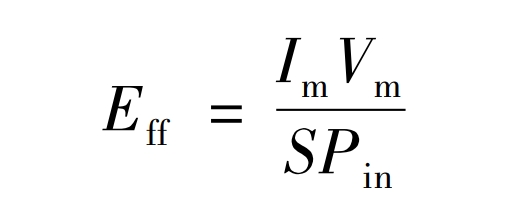
Among them, Im and Vm respectively represent the maximum current and maximum voltage emitted by the solar panel, S is the module’s power generation area, and Pin is the incident power of sunlight. Through calculation and analysis, the conversion efficiency of the flexible solar panel (specification 1 W/2 V/500 mA) used in this device is relatively high, which can meet the high efficiency requirements of solar power generation devices.
However, due to the arbitrariness of the relative position between the human body and the sun, the reasonable distribution of solar panels on clothing is a necessary condition to ensure the efficient operation of solar power generation devices. When facing the sun, solar panels located in the front and shoulder positions are effectively illuminated by sunlight, while solar panels located in the back position cannot receive sunlight; When a person’s back is facing the sun, solar panels located in the back and shoulder positions are effectively illuminated by sunlight, while solar panels located in the front position cannot receive sunlight. Based on the above analysis, suitable flexible solar panels are placed on the front, shoulders, and back of the sportswear to provide sufficient solar energy for the solar power generation device.
2.2 Design of piezoelectric power generation equipment
Considering the efficiency of piezoelectric power generation devices, if it is assumed that piezoelectric materials are subjected to a frequency of ω The resonant force F, then the power P generated by the piezoelectric element can be expressed as:
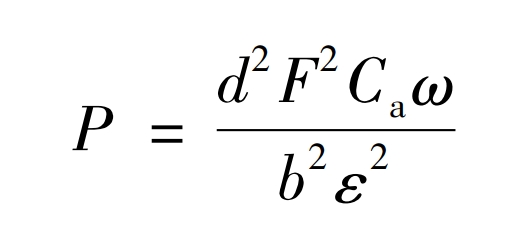
Where d is the transverse piezoelectric coefficient of the piezoelectric element, and b is the width of the piezoelectric element, ε, Ca is the equivalent dielectric constant and parasitic capacitance of the piezoelectric element, respectively.
According to the formula, the material of the piezoelectric power generation device is selected at the same frequency ω Piezoelectric ceramics with high power generation under the condition of harmonious vibration force F.
Considering the power generation conditions and portability of the piezoelectric power generation device, in order to provide the resonant force F to the piezoelectric ceramic and not to use a large and difficult to carry vibration source device, the piezoelectric power generation device adopts the method of fixing the piezoelectric ceramic in the shoe to meet the power generation conditions.
Considering the influence of the placement of piezoelectric ceramics in shoes on the efficiency of piezoelectric power generation devices, shoes used as piezoelectric ceramic carriers can be regarded as a cantilever beam. When walking, the back half of the shoe moves in frequency ω Perform up and down vibration.
According to material mechanics:

Where h is the thickness of the cantilever beam, simulate f (x) using a pseudo function. Through calculation, it can be concluded that the first three modes of vibration have the maximum strain at x=0. Therefore, the piezoelectric ceramic should be pasted to the root of the cantilever beam, that is, the position of the piezoelectric ceramic should be as close as possible to the position where the shoe bends the most during walking.
2.3 Design of Energy Storage Circuit
The main part of the solar energy storage circuit is the boost circuit. In order to improve the efficiency of the energy storage circuit, MAX1672 chip is used. The static current of this chip is small, and the energy consumption during the voltage conversion process is extremely low, which meets the requirements of high efficiency for energy storage circuits.
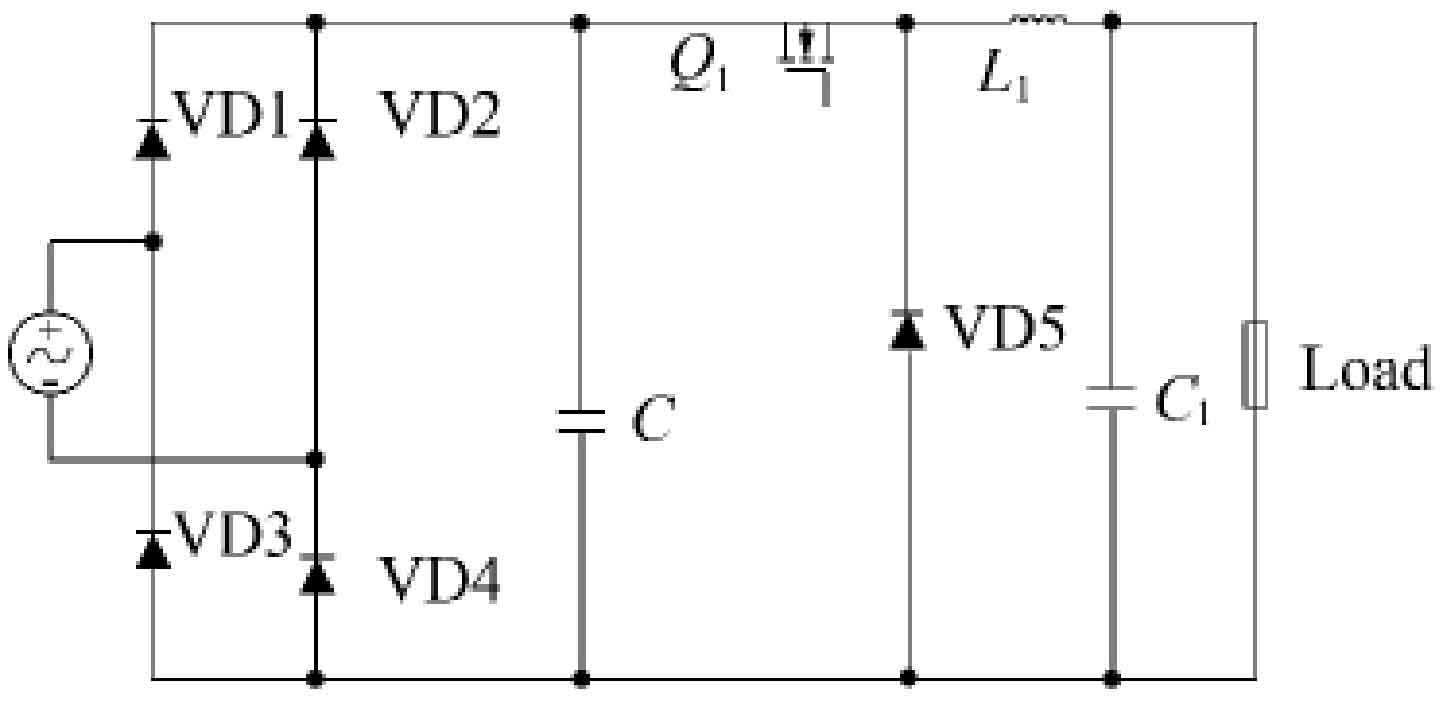
The kinetic energy storage circuit of the human body is shown in Figure 2, which mainly includes a rectification circuit and a boost circuit. Among them, switch Q1 is the core component of the piezoelectric energy storage circuit. When the voltage of capacitor C meets the conditions for charging the energy storage battery, Q1 closes, allowing the electrical energy generated by the piezoelectric ceramic to be stored in the battery; When the voltage of capacitor C cannot meet the conditions for charging the energy storage battery, Q1 is turned on, allowing capacitor C to continuously accumulate electrical energy until the voltage at both ends reaches the conditions for charging the energy storage battery.
3. Experimental data analysis
Measure the data of the power supply device in different weather and environments, and simulate the effect of the power supply device in the field environment. To better demonstrate the advantages of combining photovoltaic and piezoelectric power generation technologies, measure the data of solar power generation devices and piezoelectric power generation devices working alone and together, and analyze the comparison of the two types of data. Choose the time period from 9:00 to 17:00 in October in Changchun to power the phone, with a starting battery level of 20%. Choose the phone model as HTC Butterfly S, with a battery capacity of 2300 mA · h. The phone is always turned off during each measurement. Each measurement data includes individual measurements of solar clothing, piezoelectric shoes, and overall power supply devices.
On a sunny day with a temperature of 17 ± 2 ℃, data measurements were taken while walking continuously. The measurement results are shown in Figure 3.
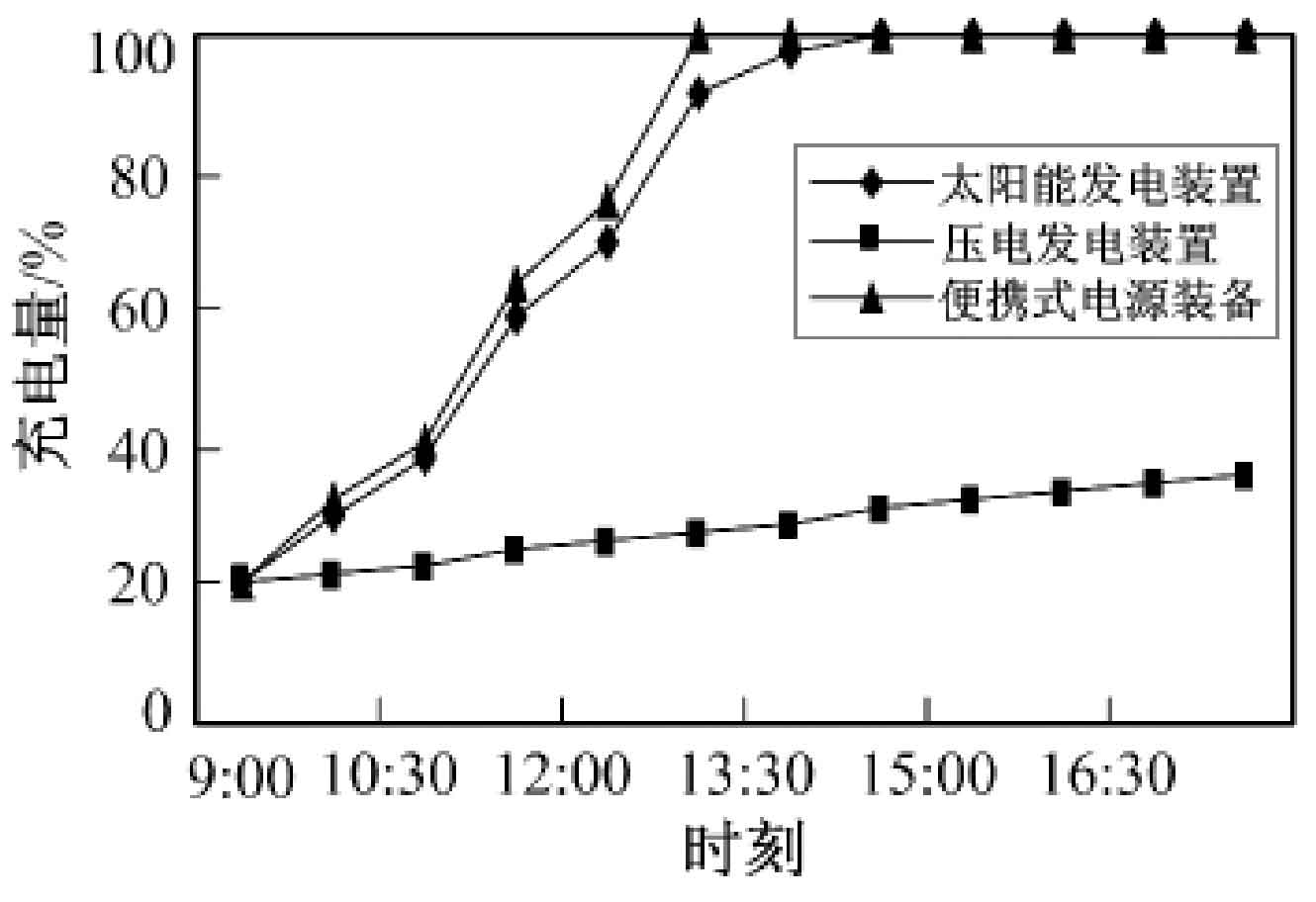
According to the data in Figure 3, it can be concluded that when the solar power generation device works alone, it takes 5 hours for the phone’s battery to increase from 20% to 100%; When the piezoelectric power generation device works alone, the phone’s battery capacity increases by 16% during an 8-hour measurement process; When the overall power supply device is working, it takes 4 hours for the phone’s battery to increase from 20% to 100%. By comparing three sets of data, it can be concluded that the power supply device can significantly improve the charging rate of electrical equipment under sunny sports conditions.
On a cloudy day with a temperature of 13 ± 2 ℃, data measurements were taken while walking continuously. The measurement results are shown in Figure 4.
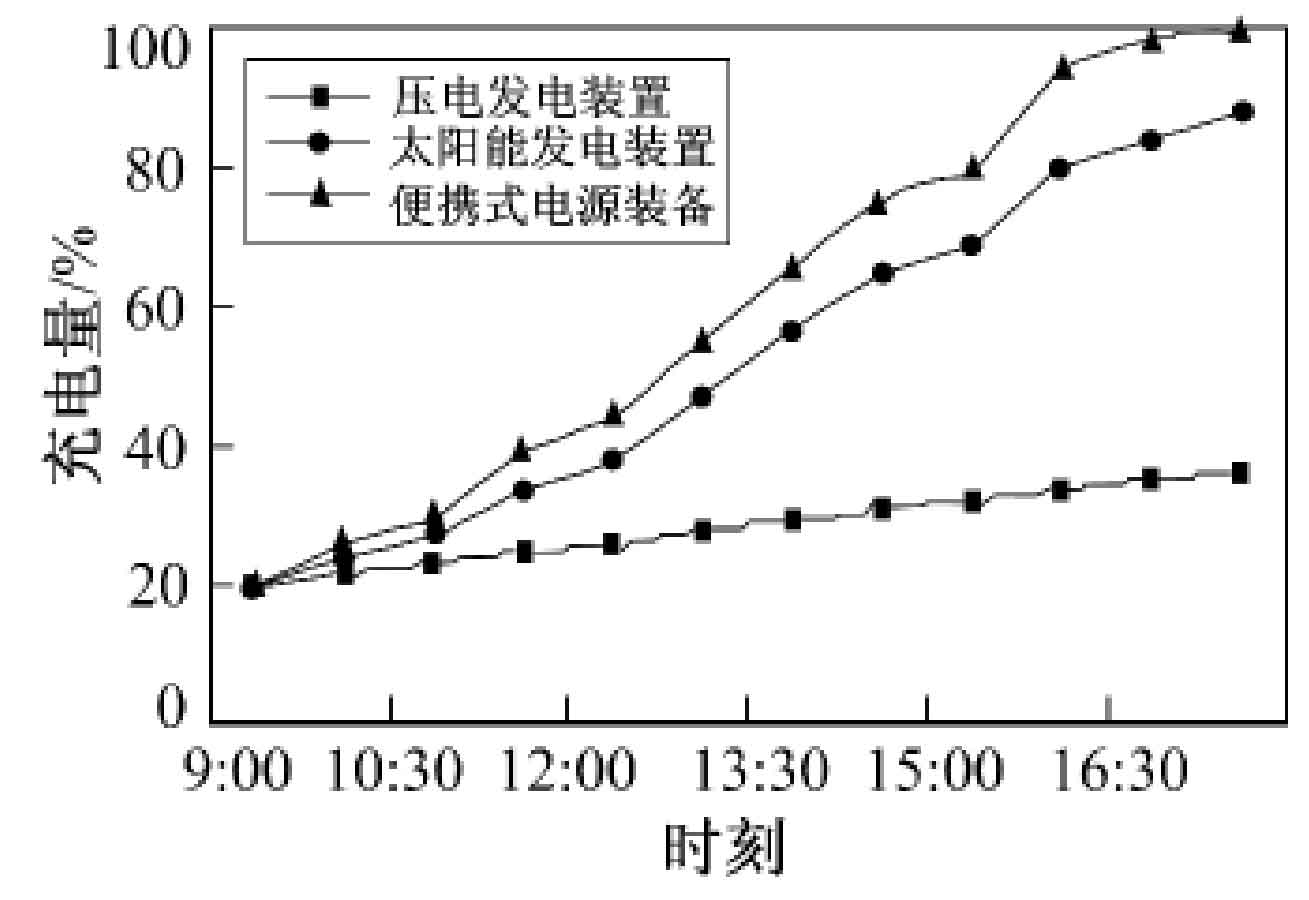
According to the data in Figure 4, it can be concluded that when the solar power generation device works alone, the battery capacity of the mobile phone can only increase from 20% to 88% during the 8-hour measurement process; When the piezoelectric power generation device works alone, the battery capacity of the mobile phone increases by 16% during the 8-hour measurement process; When the overall power supply device is working, it takes 8 hours for the phone’s battery to increase from 20% to 100%. Through the comparison of three sets of data, it can be seen that the power supply device can significantly improve the charging rate of electrical equipment under cloudy sports conditions.
On a cloudy day with a temperature of 13 ± 2 ℃, data measurements were taken while walking non continuously, i.e. walking at a constant speed for 1 hour and stopping for 0.5 hours. The measurement results are shown in Figure 5.
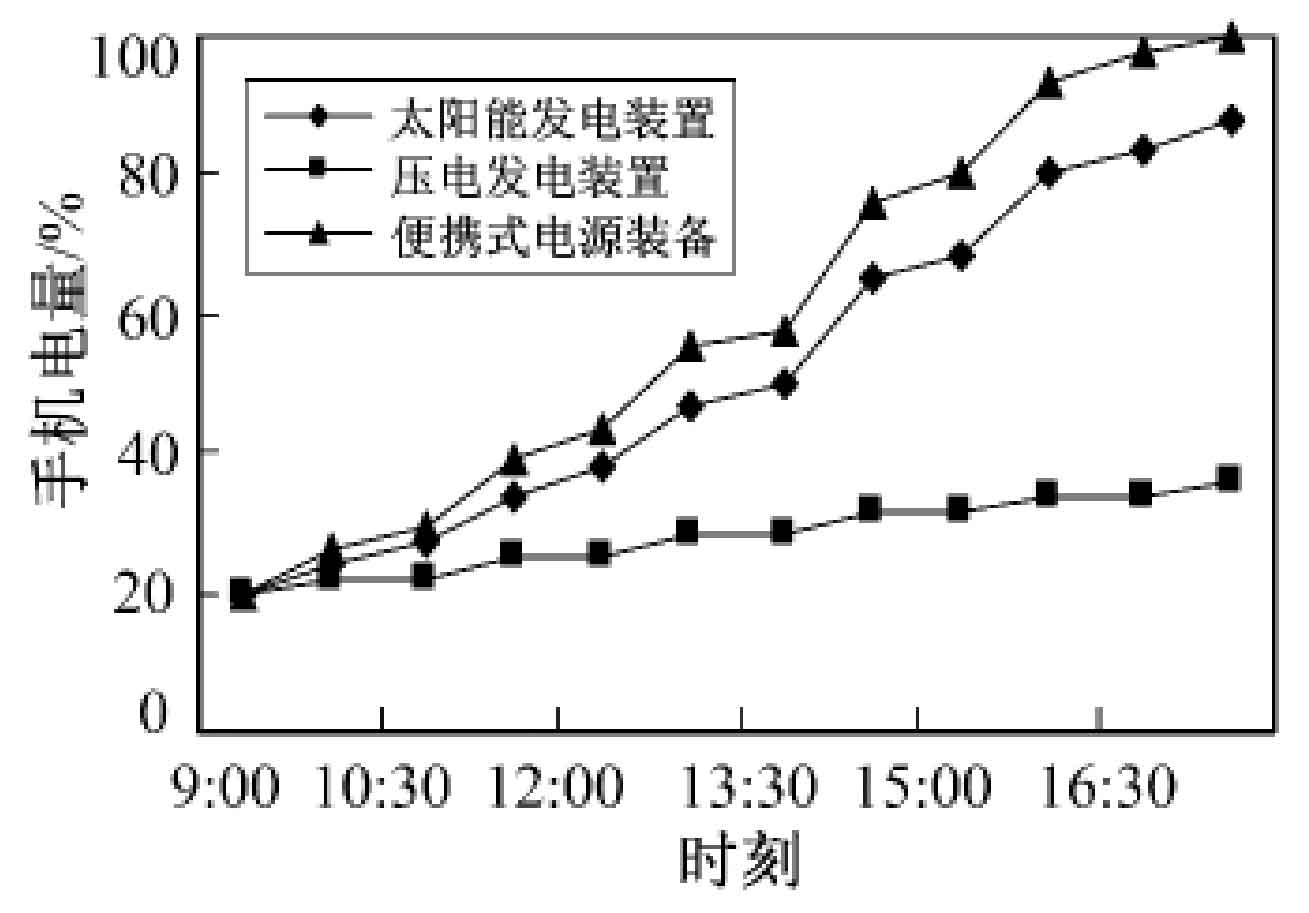
By comparing Figures 5 and 4, it can be concluded that non continuous walking has little effect on the charging rate. When walking, the battery of the phone will continue to increase, and stopping walking will not cause the battery to decrease, indicating that this device will not cause backflow. The discontinuous motion state can more realistically simulate the scenario of outdoor hiking, and the experimental results have proven that intermittent motion can also collect energy.
4. Conclusion
In actual outdoor environments, portable power supply devices with a single energy source may be affected by weather and other factors, and cannot continuously provide power to users. However, solar jackets and piezoelectric shoes designed based on photovoltaic and piezoelectric power generation technologies can complement each other’s advantages and achieve the goal of improving power generation efficiency by combining the two. The experimental results show that this portable power supply device overcomes the disadvantage of being easily affected by environmental factors in practical applications compared to traditional portable power supply devices, and has advantages in energy utilization and efficiency.
